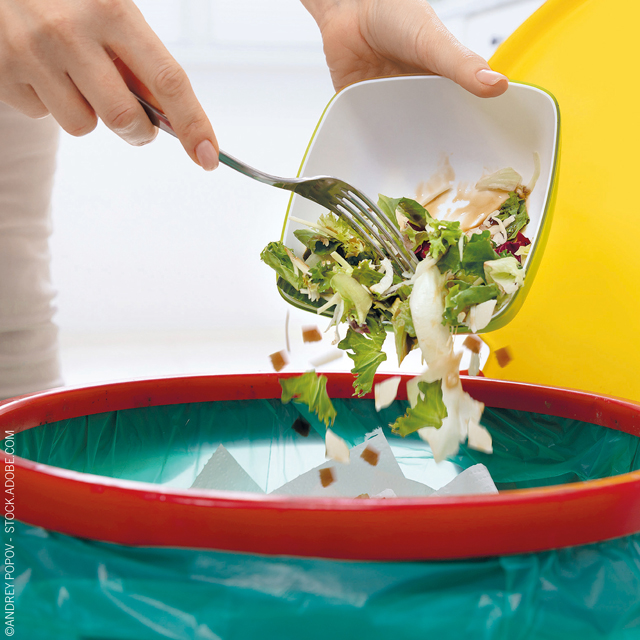Food waste is a complicated concept. There are various definitions from different respected units using data from varying sources and studies using different methods. USDA defines food loss as the loss of edible food that occurs in the food supply chain starting from post-harvest and including losses at the retail and consumer levels. The Food and Agriculture Organization (FAO) of the United Nations defines food loss as the decrease in the quantity or quality of food that occurs in the food supply chain from harvest/slaughter/catch, but doesn’t include loss from retailers, foodservice providers, and consumers. FAO defines food waste as the decrease in the quantity or quality of the food that occurs in the retail and consumption levels of the food supply chain. The United Nations and the Institute of Food Science & Technology (IFST, 2020), the lead professional society of food science and technology in the U.K., follow the FAO definitions.
In this article, I focus on food waste or the loss of food that occurs at the consumer level.
Food Waste Estimates and Causes
The USDA Economic Research Service estimates that, in 2010, food loss in the United States comprised 31% of the food supply at the retail and consumer levels, or approximately 133 billion pounds of food, with an estimated retail value of $162 billion. The European Union’s (EU-28) total edible and inedible food waste is estimated at 88 million tons in 2012, with about 62 million tons (or about 70% of the total food waste) coming from the wholesale and retail, foodservice, and household levels, and costing more than €140 billion ($168 billion) yearly when accounting for associated financial costs. Households contributed the most to the total EU-28 food waste at about 53%, while processing added about 19%.
Global food waste is estimated at 1.3 billion tons per year, per the FAO, or more than one-third of worldwide food production. Fresh fruits and vegetables lead global food waste at 45% of the global food production, with food waste from residential homes one of the largest rates. Most of this waste goes to landfills, where conditions support generating greenhouse gases such as methane, which contribute to global warming. Those food wastes may occur due to improper handling, lack of proper storage, unsold stock, and processing (e.g., peeling, washing, drying). Other factors contributing to food losses and waste in the food supply chain include no raw materials in the farm, no labor in the farm, limitations on transportation, or problems due to infestations, microbial spoilage, over ordering, equipment malfunction, food culls, failure to meet product specifications, seasonal foods, bulk size packaging, overstocking, overproduction, and human error, which often results from lack of worker training.
At the consumer level, a consumer’s different understanding of product expiration dates, product storage at inappropriate temperatures, shopping and cooking in excess of actual need, inappropriate food management, lack of cooking skills, and lack of knowledge of preservation practices further contribute to food waste.
Influence of COVID-19 on Food Waste
Did COVID-19 lead to an increase or a decrease in food waste?
Researchers of a study published in the journal Environment, Development and Sustainability (2020) reported that during a crisis there is a preference to save rather than to throw, as consumers did during severe recessions in Greece and Italy, leading to reduced waste. But the same researchers also contend that pandemic-driven disruptions such as lockdowns, storage limitations, and stockpiling, coupled with the lack of consumer cooking skills and practices, could have increased household food waste during COVID-19.
Research results published in the journal Food Policy in 2015, before the pandemic, indicated that countries that are most developed and have higher income per capita produced larger amounts of food waste. For example, those living in the Czech Republic, Estonia, Lithuania, and Poland produce less food waste than those from Denmark, Ireland, and Sweden. People aged 65 and older tend to produce less food waste than their younger counterparts. Since females are most likely to be the primary food preparers at home, they are more familiar with and produce less food waste than males, according to the same researchers. Unemployment is associated with producing less food waste than employment. Those with a higher level of education tend to have higher earnings and produce more food waste than those with a lower level of education. People living in rural areas produce less food waste than those in urban areas, and living in areas with less litter tends to encourage residents to produce less food waste.


Leave a Reply